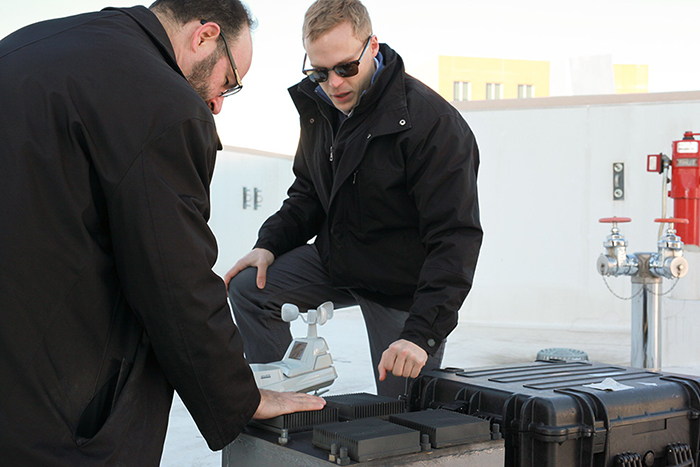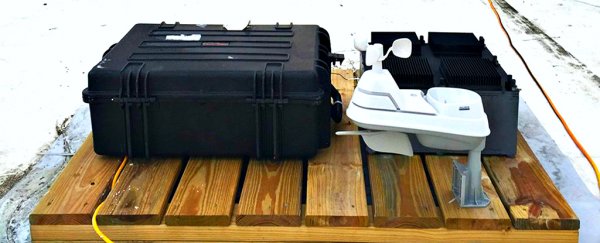Temperature changes large and small are happening around us all the time, and scientists have come up with a machine that can convert those fluctuations into electricity, potentially powering sensors and communication devices almost out of thin air.
The energy harvesting is done through what's called a thermal resonator: a device that captures heat on one side and radiates it over to the other. As both sides try and reach equilibrium, the energy can be caught using the process of thermoelectrics.
According to the team from the Massachusetts Institute of Technology, the new thermal resonator could keep remote sensors or any off-grid devices powered up for years, just by using temperature swings – like the natural ones between night and day, for instance.
 (MIT)
(MIT)
"We basically invented this concept out of whole cloth," says one of the researchers, Michael Strano. "We've built the first thermal resonator."
"It's something that can sit on a desk and generate energy out of what seems like nothing. We are surrounded by temperature fluctuations of all different frequencies all of the time. These are an untapped source of energy."
Generating power from changes in temperature has been tried before through various different techniques such as pyroelectrics, but this new method is both more efficient than previous efforts and the first that can be tuned to adapt to specific periods of temperature variation.
Where the team of scientists really made headway is in the combination of materials used for their thermal resonator: metal foam, graphene, and a special wax called octadecane, which changes between a solid and a liquid as the temperature goes up and down (technically a phase-change material).
That gives the new device an optimal level of thermal effusivity – a combination of thermal conduction (how fast heat can spread through a material) and thermal capacity (how much heat can be stored in a material). Usually, materials that score highly in conduction don't do well with capacity, and vice versa.
When tested with a 10-degree Celsius (18-degree Fahrenheit) temperature difference between night and day, a small sample of material produced 350 millivolts of potential and 1.3 milliwatts of power, which is enough to keep small sensors or communications systems running – no batteries or power sources required.
What's more, the thermal resonator can work in any kind of weather conditions, and even in the shade, as long as there are ambient temperature changes. It could even be fitted under solar panels to harvest excess heat, according to its makers.
Next the team wants to test it on other types of temperature fluctuation: from the on-off cycling of a refrigerator, for example, or machinery in industrial plants. One potential use is as a backup system that can kick in if regular power sources start to fail.
Eventually we could even see planetary rovers powered by this kind of technology, using the cycles between day and night to keep their batteries charged. The method doesn't produce so much power that we can do away with existing batteries and power grids, but it does have the potential to help in a lot of different scenarios.
Now we know something like this can work, scientists can carry out more research on where the most optimal temperature fluctuations might be found – something we don't yet know much about.
"We're surrounded by temperature variations and fluctuations, but they haven't been well-characterised in the environment," says Strano.
The research has been published in Nature Communications.
